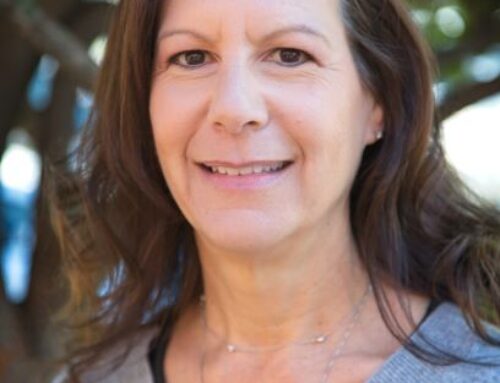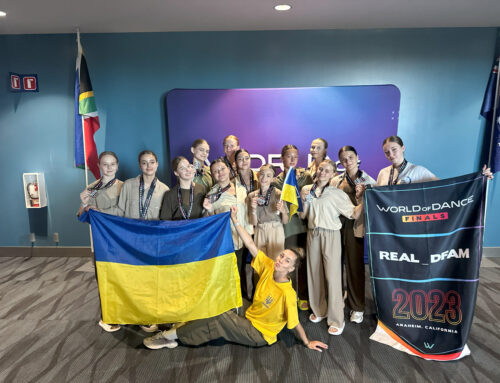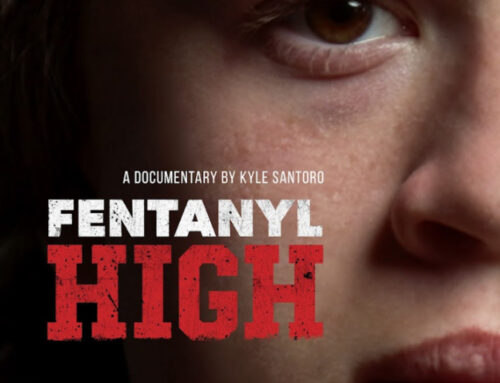Horsemanship show provides opportunity to shine
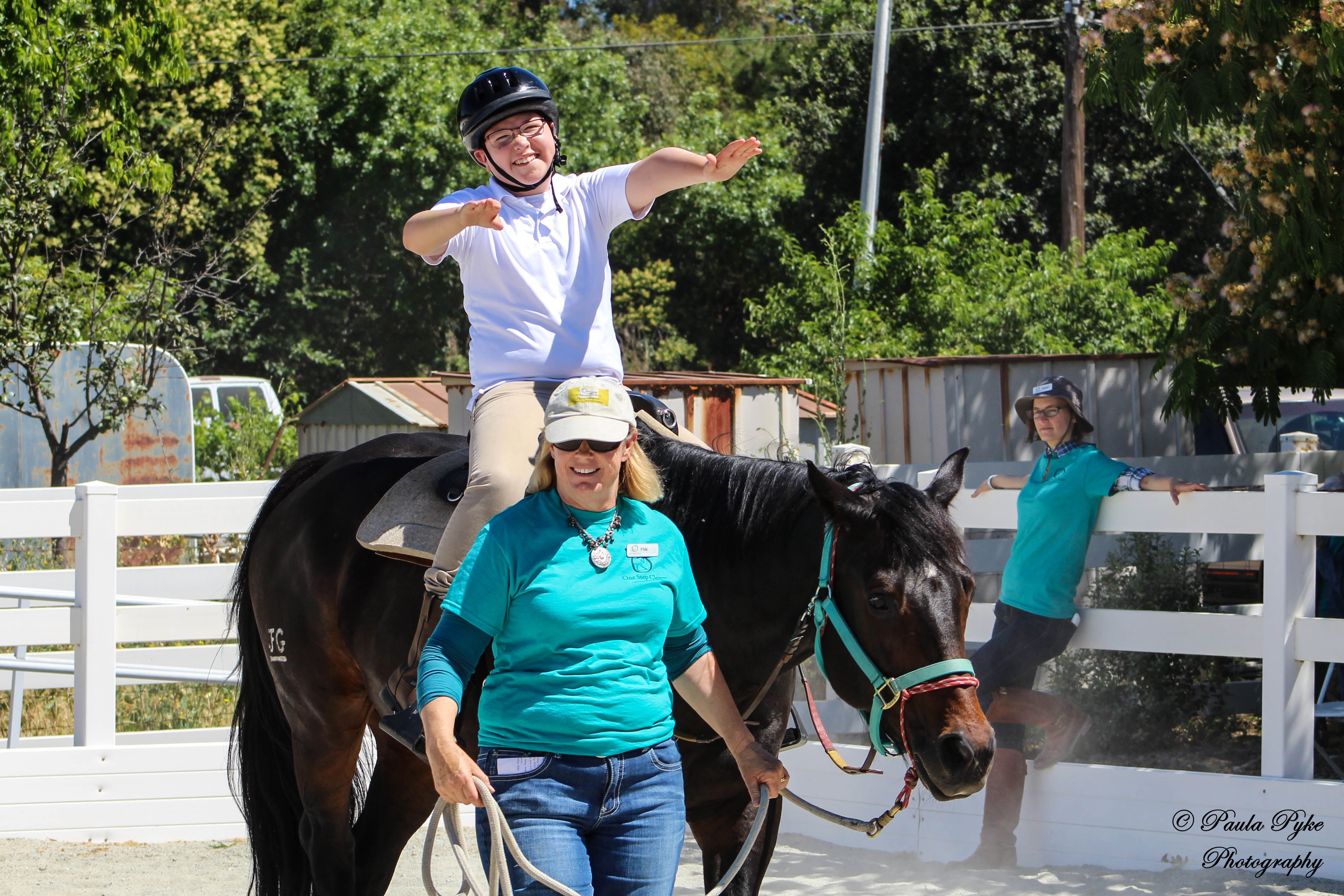
Photo courtesy Paula Pyke
One Step Closer participant Andres demonstrates balance exercises while riding Noah. Volunteer Pam Peterson leads.
By Donna Lane
Getting on a horse can be intimidating for children and adults with special needs. But One Step Closer Therapeutic Riding encourages and enables all who participate in their programs to not only learn horsemanship but tackle other challenges as well.
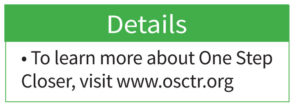 Mark and Landa Keirstead began their adaptive horseback riding program in 2006. It’s geared toward children and adults with special needs and military veterans.
Mark and Landa Keirstead began their adaptive horseback riding program in 2006. It’s geared toward children and adults with special needs and military veterans.
“Those are the two main aspects of what we do,” Mark said. “They’re equivalent in size and focus.”
Landa has a lifelong love of horses and had volunteered to be an instructor in Woodside. But it was a long drive from their rural Morgan Hill property. Then fate intervened.
“I was on a ride in Woodside and found out about therapeutic riding,” Landa recalled. “I came home so excited. We saw a need in the community. There were riders who needed physical therapy, and they had nowhere to go.”
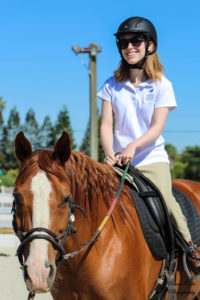 The Keirsteads picked up their first therapy horse, Reba, from an Idaho auction. Then Joe Gonzales, who ran a summer horse camp at Calero, donated some horses. Soon, news of the program spread through word of mouth. Now, OSC is a Premier Center for Professional Association of Therapeutic Horsemanship International.
The Keirsteads picked up their first therapy horse, Reba, from an Idaho auction. Then Joe Gonzales, who ran a summer horse camp at Calero, donated some horses. Soon, news of the program spread through word of mouth. Now, OSC is a Premier Center for Professional Association of Therapeutic Horsemanship International.
Horses are intuitive, intelligent animals, sensing their rider’s emotions. “The movement of the horse creates stability,” Landa said. This is critical for those who struggle with sensory disorders, such as autism. “There’s enough stimulus in the movement to make it calming and effective.”
She further explained, “Neurosensors fire back to the brain. This carries over for a period of time and can change the brain’s pattern. Horses can feel or sense us 100 feet away. There’s a change of heart rhythms, breathing, connection to self.”
 Landa created the School of Readiness for children ages 4 to 8, featuring horsemanship lessons tailored to help children with special needs succeed in school. The Adaptive Riding program is open to children and young adults. After observing their riders’ progress, the Keirsteads decided to add an annual horsemanship event, something most of their riders wouldn’t have the opportunity to attend, let alone participate in.
Landa created the School of Readiness for children ages 4 to 8, featuring horsemanship lessons tailored to help children with special needs succeed in school. The Adaptive Riding program is open to children and young adults. After observing their riders’ progress, the Keirsteads decided to add an annual horsemanship event, something most of their riders wouldn’t have the opportunity to attend, let alone participate in.
“The first year we did the show, we got amazing feedback,” Mark recalled. “I remember one mom who said no one had ever clapped for her son before.”
The impact this show could potentially have on families who are used to struggling in social situations was not lost on the Keirsteads.
“All these students have some diagnosis that impacts their ability to succeed in school,” Mark said. “It might be language development, body awareness, appropriate behavior. Landa brings it into the lesson, and the kids don’t realize it’s therapy.”
 Landa assesses each student for their varying abilities and talks about rider goals. From there, they may choose different disciplines such as gymkhana, trail riding, or Western or English lessons. Regardless of special needs, Landa maintains the integrity of the lesson, teaching proper riding techniques in a 10-week session.
Landa assesses each student for their varying abilities and talks about rider goals. From there, they may choose different disciplines such as gymkhana, trail riding, or Western or English lessons. Regardless of special needs, Landa maintains the integrity of the lesson, teaching proper riding techniques in a 10-week session.
For special needs families, one of the goals is to help their child integrate into the mainstream. Unfortunately, there’s a lot of ignorance.
“Most of these kids and young adults don’t have a chance to participate in sports or the school play,” Mark said. “This is a safe environment, not open to the public. The audience is 70 to 100 family members. It gives kids a chance to show what they’ve learned. But it’s not a competition.”
Landa added, “This year, we’re doing a dressage show. All our participants have learned how to do a walk, halt, salute for the judges. On the day of the show, they come in riding clothes and stand taller.”
The show’s goal is to demonstrate patterns, sequence, and connect the dots. “Think of a child with ADD,” Landa pointed out, “who can connect dots and hold onto a pattern. Likewise, a nonverbal child can look in an instructor in the eye and understand. There are other ways to communicate.”
The event is an opportunity for riders to showcase what they’ve learned. Some ride individually, while some ride in a group, up to four at a time. They’ve been working on their patterns since January.
 In the meantime, the Keirsteads and their team of volunteers do everything to ensure students have the best day possible. “It’s all a learning experience,” Landa said. “If someone’s not quite ready, we wait, very quietly allow them the time they need.”
In the meantime, the Keirsteads and their team of volunteers do everything to ensure students have the best day possible. “It’s all a learning experience,” Landa said. “If someone’s not quite ready, we wait, very quietly allow them the time they need.”
And the program has grown by leaps and bounds in the past 13 years.
“When we set out, I thought I’d help a few kids,” Landa recalled. “But the need was overwhelming. There are over 50 volunteers. They pour their hearts and souls into this and believe in it.”
After the show, OSC holds a barbecue. It’s a chance for families to feel part of a community, away from the awkward stares of those who feel uncomfortable. And for the riders, it can provide the encouragement to explore other life skills.
“Last year, a mom and her adult daughter joined us for lunch,” Mark said. “The mom said, ‘Look, she’s feeding herself.’ She had never done that before.”
One Step Closer’s benefits extend beyond the arena, for riders, volunteers, and instructors. For Landa, she said the benefits are “to have a purpose in this world, to give back, and to see smiles.”


